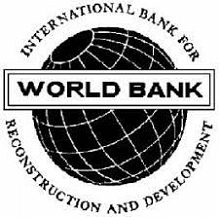What is the Full Form of IBRDIBRD: International Bank for Reconstruction and DevelopmentThe full form of IBRD is International Bank for Reconstruction and Development and it is a multilateral financial agency that provides lending to emerging economies with middle incomes. The IBRD is the first of the World Bank Group's five-member organizations, with headquarters in Washington, D.C., USA. 
Purpose of IBRD:Even though one of the Bank's initial missions was to aid in the smooth transition from wartime to peacetime countries, economic growth quickly had become the Bank's primary goal. The world Bank's current mission is to support economic and social development that favors the disadvantaged in emerging countries. Loans are granted to developing countries to aid in alleviating poverty and to fund activities that promote economic progress. Roads, power plants, schools, and irrigation networks, as well as agricultural extension, training of teachers, and health improvement for children and pregnant women, are among the expenditures. Some credit facilities are used to help countries restructure their economic structures in an effort to assist them to be more sustainable and productive. Primary Functions of IBRD
Other Functions of IBRD
Finance of IBRD
ServicesThe IBRD provides financial services as well as strategic coordination and information services to its borrowing member countries. The Bank Only finances sovereign governments. The World Bank Treasury is the division of the IBRD that manages the Bank's debt portfolio of over 100 billion dollar and financial derivatives transactions of 20 billion dollar. Flexible loans are offered by the Bank with maturities as long as 30 years and custom-tailored repayment scheduling. Loans are offered in local currencies by the IBRD. Through a joint effort between the IBRD and the International Finance Corporation, the Bank offers financing to subnational entities either with or without sovereign guarantees. The Journey of IBRD so farPost-World War II, the International Bank for Reconstruction and Development expanded its mission to also include promoting economic expansion and social equity. The IBRD now concentrates its activities on intermediate-income nations. Middle-income countries are defined as those with annual per capita incomes ranging from $1,026 to $12,375. This and many other data are adjusted by the IBRD every year to factor in inflation, financial shifts inside intermediate-income states, and other variables. Quickly developing economies, such as those in Indonesia, Thailand, and India, attract a bunch of international investment and huge infrastructure construction projects. Around the same time, intermediate-income countries are host to 70 percent of the world's deprived, owing to the disproportionate distribution of the benefits of industrial growth. The International Bank for Reconstruction and Development's mission is to assist such countries' governments in navigating the road to economic wealth by providing funding and fiscal policy guidance. This will frequently assist governments in financing public works projects that increase a nation's economic viability while also assisting administrations in managing state finances and cultivating investor sentiment. Among the World Bank Group's credit enhancement and guarantee products, the IBRD offers policy-based guarantees to cover countries' sovereign default risk, partial credit guarantees to cover the credit risk of a sovereign government or subnational entity, and partial risk guarantees to private projects to cover a government's failure to meet its contractual obligations. History of IBRDIn the course of the Bretton Woods Conference in 1944, a meeting of the 44 Allied Countries of World War 2 aimed at establishing the post-war world's economic order, the IBRD was established in preparation for World War 2's end. The birthplace of the International Monetary Fund and the International Bank for Reconstruction and Development was The Bretton Woods Agreement. The French state was the first IBRD's credit to facilitate financing the renovation of essential infrastructure. The IBRD moved its priority after the rebuilding of Europe to encourage economic growth in other regions of the globe. IBRD and India
ConclusionIBRD is a key financial institution that plays a great role in the development of middle-income countries. Questions related to IBRD and other related financial institutions have been asked in many competitive examinations.
Next TopicFull Form
|
 For Videos Join Our Youtube Channel: Join Now
For Videos Join Our Youtube Channel: Join Now
Feedback
- Send your Feedback to [email protected]
Help Others, Please Share










